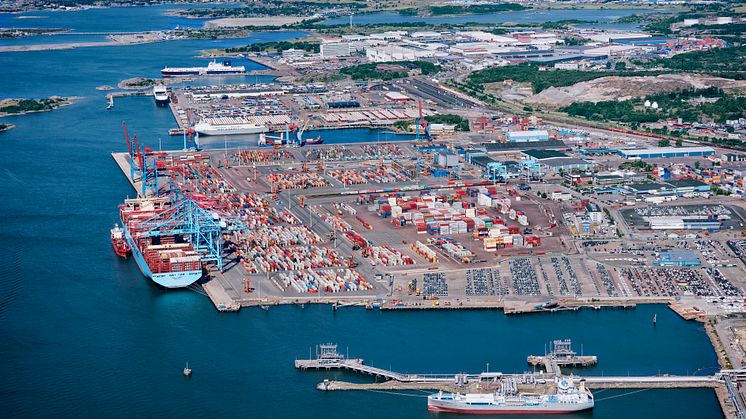
Press release -
The Port of Gothenburg takes measures to mitigate Suez effects
With the acute situation in the Suez Canal resolved, still, further delays in European ports await. Measures are now being prepared in the Port of Gothenburg that can both ensure fast transport of Scandinavian goods, and at the same time contribute to alleviating the coming congestion in major European ports.
On Monday, traffic on the Suez Canal reopened. Ships have started to pass through the canal, but there are still hundreds of ships left at the canal's inlet and outlet waiting for their turn to pass.
The situation that has arisen will mean a ketchup effect in the major European ports located between Suez and Gothenburg – many ships will call at the ports of, for example, Rotterdam, Hamburg and Antwerp almost simultaneously.
Since before the Suez problem, many of the European ports and their yards are already filled to the brim with goods, the Covid-19-pandemic being a major contributing factor. Hence, the ports in question lack the yard capacity to handle the large amount of calling ships and goods that are on the way. Thus, further delays beyond the immediate Suez Canal situation are to be expected.
Measures are taken at the port of Gothenburg
Measures are now being prepared in the port of Gothenburg that can both ensure that the Scandinavian goods can reach Gothenburg more quickly, and at the same time alleviate the congestion situation in the European ports. On Tuesday, the Gothenburg Port Authority and the Port of Gothenburg container terminal operator APM Terminals Nordic will launch a new offer to the global shipping company market.
“Instead of queuing in several European ports in a row, we now offer the opportunity to come directly to the Port of Gothenburg. Here, the shipping companies can unload their Scandinavian goods, which can then quickly reach their customers,” said Elvir Dzanic, Gothenburg Port Authority Chief Excecutive.
In addition, the port offers the opportunity to unload additional goods with other European destinations. This cargo can then be transhipped to smaller feeder vessels for further transport to other European ports. In this way, the larger vessels can also get back into their regular loops more quickly.
“We still have capacity available at our terminal in Gothenburg so we can support in this challenging time and hopefully alleviate impact of the consequential delays that is to be expected both locally and globally,” said Dennis Olesen, Managing Director at APM Terminals Nordic.
Discounted price on extra calls
In addition to the opportunity to bring their ships directly to Gothenburg, shipping companies are also offered a discount on these extra calls.
“We want to contribute to a solution to this situation as quickly as possible in every way we can. Price is always a factor, and many have ended up with increased costs due to the the Suez situation. The sooner we get back to a normal situation, the better it is for everyone in the logistics chain. If we can help speed that process up, I’d be very pleased,” said Elvir Dzanic.
Topics
Fact file: Port of Gothenburg
The Port of Gothenburg is the largest port in the Nordic region. 30 per cent of Swedish foreign trade passes through the Port of Gothenburg as well as half of all container traffic.
The Port of Gothenburg is the only port in Sweden with the capacity to receive the world's largest container vessels and has the broadest range of shipping routes within and outside Europe. The 25 rail shuttles that depart each day mean that companies throughout Sweden and Norway have a direct, environmentally smart link to the largest port in the Nordic region. The Port of Gothenburg has terminals for oil, cars, ro-ro, containers and passengers.



